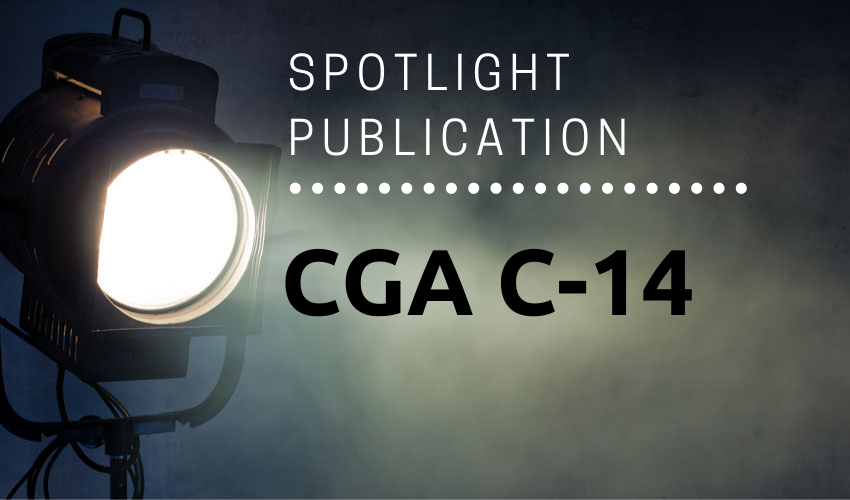CGA’s C-14 Publication Provides Fire Testing Procedures for U.S. DOT Cylinder Pressure Relief Device Systems
March 28, 2021
In January 2020, the Compressed Gas Association (CGA) issued the 5th edition of CGA C-14, Procedures for Fire Testing of DOT Cylinder Pressure Relief Device Systems. This safety publication provides procedures for fire testing of U.S. Department of Transportation (DOT) cylinder pressure relief device (PRD) systems. The requirements of DOT regulations are addressed in Title 49 of the U.S. Code of Federal Regulations (49 CFR) Parts 173.301 and 173.301b.
CGA C-14 defines test equipment and procedures that are applicable for fire testing cylinder systems having water capacities of 1000 lb (454 kg) or less. This safety publication provides sufficient test data to verify the capability of the cylinder system to prevent rupture of a normally charged cylinder. For most cylinders, selection of the type and size of PRD required to safely discharge the contents of a cylinder can be achieved by the use of the information contained in CGA S-1.1, Pressure Relief Device Standards-Part 1-Cylinders for Compressed Gases.
In Canada, CSA B340, Selection and use of cylinders, spheres, tubes, and other containers for the transportation of dangerous goods, Class 2 and CSA B342, Selection and use of UN pressure receptacles, multiple-element gas containers, and other pressure receptacles for the transport of dangerous goods, Class 2 require compliance with the requirements of CGA C-14 and CGA S-1.1, except for certain specified exemptions.
Cylinder System Fire Testing
Although 49 CFR covers cylinders in transportation, the cylinder system (cylinder and PRD system together) should be fire tested, if required, in conditions representative of actual transportation and use.
These conditions include:
- normally charged
- cylinder orientation
- fully exposed to the fire, and
- equipped as it would be for transportation and use
A fire test is conducted when:
- PRD with flow capacity less than that required by the formulas in CGA S-1.1 is used
- Possible reduction in the effectiveness of the PRD(s) is foreseen such as when moving a PRD to a more sheltered location
- PRD that is not recognized in CGA S-1.1 is used, or
- Significant change in cylinder design is contemplated such as:
- Change in materials of cylinder construction
- Use of steel-tempering temperatures less than 850 °F (454 °C)
- Tensile properties of the material are achieved through cold working of the material
- Change in the processing of the cylinder that could reduce the effectiveness of the PRD(s)
- Reduction in the insulating effectiveness of an insulated cylinder and
- New cylinder’s specification or exemption requires a fire test in compliance with CGA C-14
Previously authorized cylinder systems do not require fire testing.
Selection of Systems and Methods for Fire Testing
This publication outlines how cylinder, valve and PRD combinations, the “systems,” are selected for testing, how many combinations are needed and the different types of test methods. The systems selected for testing including the cylinder, valve, and PRD(s) need to be representative of actual production. The cylinder(s) selected for the fire test shall be the largest of the cylinders intended for use with the PRD(s). The pressure rating or yielding temperature of the PRD shall be the maximum intended for the system tested.
At least three systems must be selected for testing, and each of the three systems subjected to the requirements of either the chimney test or wood bonfire test.
Chimney test method provides a controlled and reproducible rate of heat input without localized overheating.
Wood bonfire test method provides a means of exposing cylinders to the actual environment of a fire. The wood bonfire test method facilitates testing of cylinders in various orientations and reduces the potential for the loss of test equipment in the event of cylinder rupture.
For more information about what’s included in CGA C-14, the full Table of Contents for this safety publication may be downloaded for free from the CGA C-14 publication details page on the CGA portal.
The 4th edition of CGA C-14 has been Incorporated by Reference by U.S. DOT in 49 CFR.


